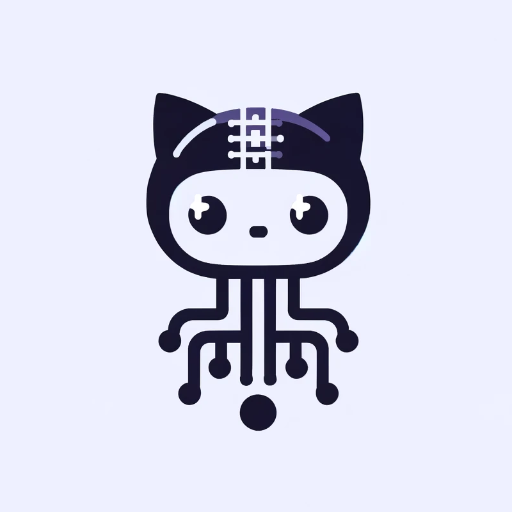Go Golang-Go Golang code development platform
Empower your coding with AI-driven Go development.
Your personal Golang assistant and project generator with a focus on responsive, beautiful, and scalable GO code. Write clean code and become a much faster developer.
🚀 Create a full CRUD app in Go with simple UI
📚 Create a package in Go to handle csv files
🪲 Find any bug or improvement in my code
💡 Teach me a useful skill or trick in Python
Related Tools

AskTheCode - Git Companion
Provide a GitHub repository URL and ask about any aspect of the code.

DevOps GPT
DevOps specialist that offers expertise in cloud operations, delivering cost-effective and secure solutions. An expert that excels in solving challenges, providing accurate guidance on Bash, AWS, Terraform, Kubernetes (K8S), Open Source, Helm, Linux Shell

Golang Engineer
An expert Go engineer to help you solve and debug problems together.

Git GPT
GitHub expert offering tailored advice and clear explanations
Wized GPT
Expert Assistance in JavaScript Coding for Wized Actions - Leverage the Power of Wized API!

GPT Builder 助手
转换 API 代码为 GPT Schema
20.0 / 5 (200 votes)
Introduction to Go (Golang)
Go, also known as Golang, is a statically typed, compiled programming language designed by Google. It was created with the goals of simplicity, efficiency, and scalability in mind, aiming to address some of the shortcomings of existing languages like C, C++, and Java. The language is syntactically similar to C but offers memory safety, garbage collection, structural typing, and CSP-style concurrent programming features. Go is particularly well-suited for building robust and high-performance applications, making it ideal for modern cloud-based and large-scale distributed systems. For example, Go's concurrency model, based on goroutines and channels, allows developers to easily manage thousands of simultaneous tasks, which is crucial in web servers, microservices, and other systems where performance and reliability are paramount.

Core Functions and Capabilities of Go
Concurrency with Goroutines
Example
Go uses goroutines, lightweight threads managed by the Go runtime, to enable concurrent programming. A goroutine is simpler and more resource-efficient than traditional threads.
Scenario
In a real-world scenario, a web server built with Go can handle multiple client requests simultaneously by spawning a separate goroutine for each request. This allows the server to process many requests concurrently without the overhead of traditional threading models.
Garbage Collection
Example
Go's built-in garbage collector automatically manages memory allocation and deallocation, helping to prevent memory leaks and reducing the complexity of code management.
Scenario
In a large-scale data processing application, developers can focus on writing business logic without worrying about manual memory management, improving productivity and reducing the potential for bugs related to memory leaks.
Fast Compilation and Execution
Example
Go is designed to compile quickly, which is a significant advantage when developing large-scale applications. The compiled binaries are also fast and efficient.
Scenario
For continuous integration pipelines in large projects, Go's fast compilation speed allows for quicker build times, enabling faster iterations and more frequent deployments. This is particularly beneficial in a microservices architecture where multiple services are developed and deployed independently.
Target Audience and Ideal Users of Go
Backend Developers
Backend developers, particularly those working on cloud services, microservices, and server-side applications, are ideal users of Go. Go's concurrency model, simplicity, and performance make it an excellent choice for building scalable and efficient backend systems. The language's ability to handle multiple connections efficiently makes it a favorite among developers of web servers, APIs, and other networked applications.
System Programmers
System programmers who need to develop high-performance, low-level applications, such as network servers, proxies, and custom load balancers, will benefit from Go's simplicity, fast compilation, and runtime efficiency. Go offers a clean and simple syntax, making it easier to write and maintain complex system-level code compared to other languages like C or C++.

How to Use Go Golang
Visit aichatonline.org
Start by visiting aichatonline.org to get a free trial of Go Golang without needing to log in or have a ChatGPT Plus subscription. This is your first step towards exploring Go Golang’s capabilities.
Install Go
Download and install Go from the official website (golang.org). Ensure that your system meets the necessary requirements. Set up your Go workspace by configuring environment variables like GOPATH and GOROOT.
Create Your First Go Project
Initialize a new Go module with 'go mod init <module_name>'. Create a simple Go program in a '.go' file to start coding. Use 'go run <file>.go' to run your program and 'go build' to compile it.
Explore Go Libraries
Familiarize yourself with Go’s extensive standard library and third-party packages. Use 'go get' to download and install packages, and integrate them into your projects for enhanced functionality.
Write and Test Code
Write clean, idiomatic Go code by following best practices. Use 'go test' to create and run unit tests for your code, ensuring reliability and performance. Leverage Go’s concurrency model to write efficient, scalable applications.
Try other advanced and practical GPTs
hot or not | Are You Attractive?
AI-powered analysis for your beauty rating.

*Pro* Academic Research Paper Proof Reader
AI-powered proofreading for academic writing.

Voice Over From Text
AI-Powered Voice Over From Text

Voice Over
AI-Powered Voice Over for Every Need

Text Message GPT
AI-powered tool for instant, versatile text creation and information.

연애 - Dating
Find your ideal match with AI.
FigmaTo React Code Expert
AI-powered Figma to React code conversion

Forex Scalp Trader Unlocked
AI-Powered Forex Scalping for Precision Trades

Remove AI plagiarism
AI-powered originality for your content.

Watermark Remover
AI-Powered Image Watermark Remover.

Plagarism Remover
AI-powered Rephrasing for Plagiarism-free Content

Design Sequence Diagram & Implement
AI-powered sequence diagrams and API code generation.

- Web Development
- Concurrency
- Microservices
- Cloud Services
- Backend
Five Detailed Q&A about Go Golang
What is Go Golang best used for?
Go is ideal for building fast, reliable, and scalable applications. It excels in backend development, cloud services, DevOps tools, and microservices due to its simplicity, strong concurrency model, and excellent performance.
How do I manage dependencies in a Go project?
Go uses modules to manage dependencies. You can initialize a module with 'go mod init' and add dependencies using 'go get'. The 'go.mod' file tracks your dependencies, and 'go.sum' ensures consistent builds by locking versions.
What are Go’s strengths compared to other languages?
Go’s strengths include its simplicity, ease of learning, strong performance, and built-in concurrency model. It compiles to native machine code, resulting in fast execution. Its garbage collector and memory management are also optimized for efficiency.
How does Go handle concurrency?
Go uses goroutines for concurrency, which are lightweight threads managed by the Go runtime. Goroutines communicate via channels, making it easy to write concurrent code that is safe and easy to understand.
How can I deploy a Go application?
You can deploy a Go application by building it into a single binary using 'go build'. This binary is portable and can be easily deployed on any platform. For web applications, deploying to cloud services or using containers like Docker is common.